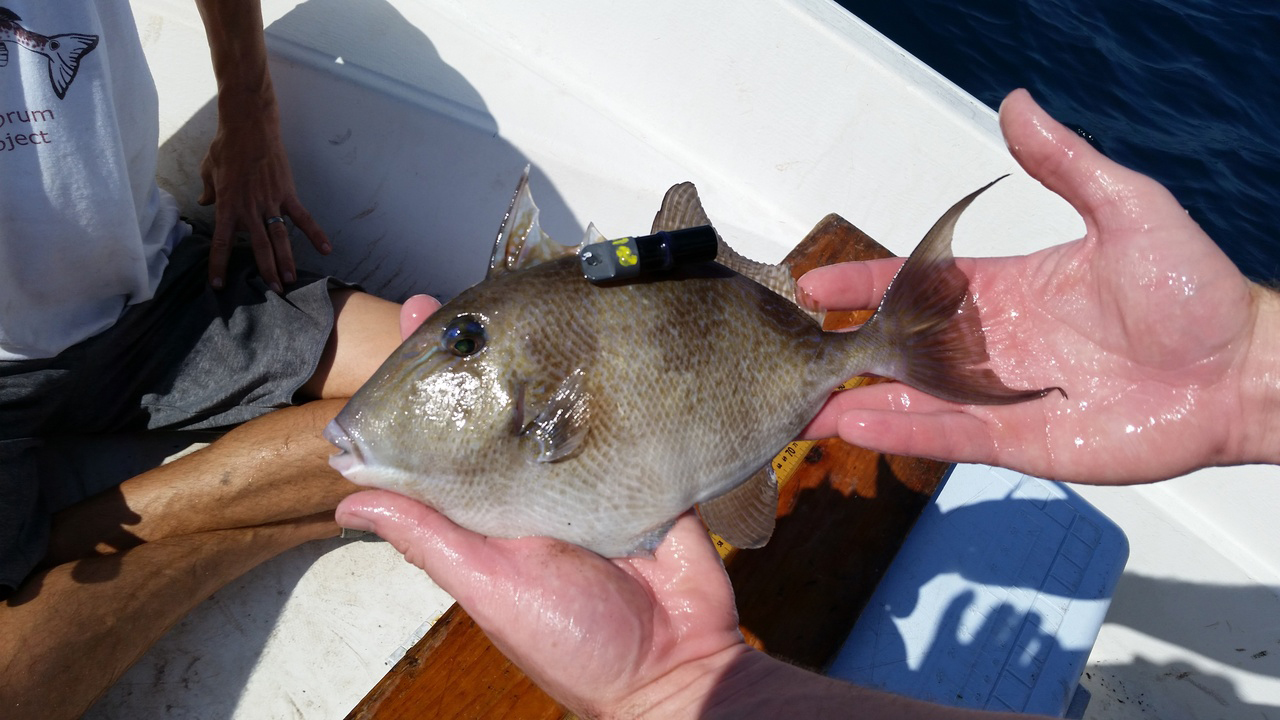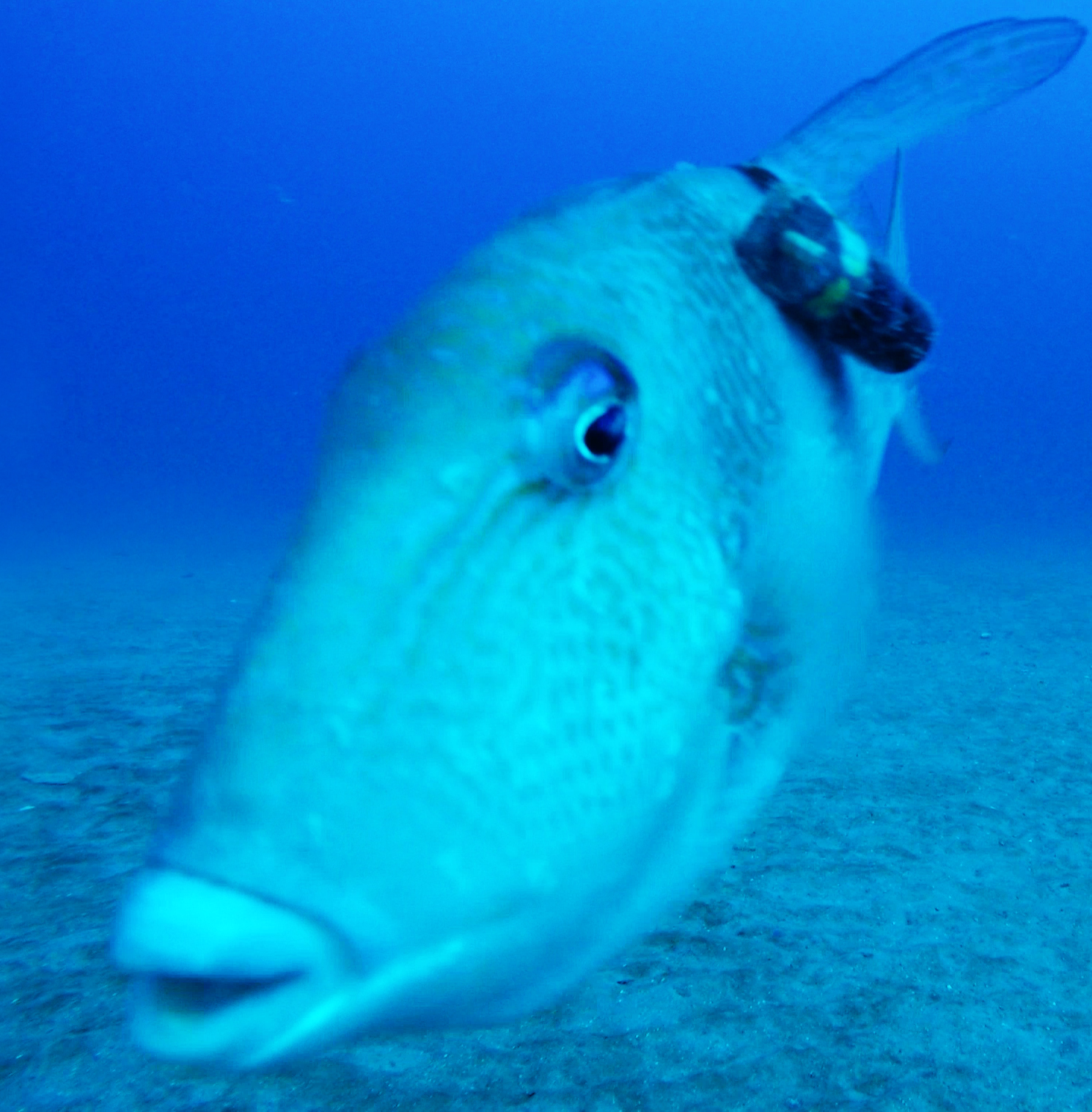Do Hurricanes Affect Fish in Deep Water?

Tropical Systems Can Cause Gray Triggerfish to Evacuate
Research Need
Hurricanes wreak havoc on coastal marine ecosystems. They destroy coral reefs, mix up the water column, redistribute bottom sediments and increase pollution through storm-water runoff.
Hurricanes also can cause fish to evacuate nearshore estuaries and coastal ocean environments for deeper water. Nobody has previously studied whether storms influence fish in deeper water, but most people have assumed these fish remain generally unaffected.
What did they study?

Researchers at the NOAA Beaufort Laboratory in North Carolina and a colleague at the Naval Postgraduate School affixed transmitters to 30 gray triggerfish, a commercially and recreationally important oceanic species that dwell in rocky reef habitats in the southeast United States. The team tracked these fish in an area off North Carolina during September 2017 as two hurricanes, Jose and Maria, moved along the coast.
What did they find?
Surprisingly, as each storm approached, most of the gray triggerfish quickly evacuated the 120-foot deep study area for even deeper water, and those few fish that remained in the study area swam much faster than normal. After the passing of each storm, many of the gray triggerfish returned to the study area within a couple of days and resumed normal swimming behavior.
What else did they find?
Previous studies have indicated that falling barometric pressure, increased runoff, or a change in water temperature are primary cues that fish use to determine storms are approaching. Here, though, gray triggerfish evacuated the study area one to two days in advance of hurricanes, long before any changes in barometric pressure or water temperature occurred.
But why?
The research team determined that as surface waves increased in size from each approaching storm, energy from those large waves transferred to the bottom, sloshing water on the seafloor. Only waves from the largest storms can transfer enough energy to cause this sloshing at a depth of 120 feet.
It appears that the sloshing of bottom water, or the related fluctuating water pressure from sloshing, was the cue to which gray triggerfish responded.
Reading
Bacheler, NM, KW Shertzer, R Cheshire, JH MacMahan. 2019. Tropical storms influence the movement behavior of a demersal oceanic fish species. Scientific Reports. DOI: 10.1038/s41598-018-37527-1.
summary compiled by Kyle Shertzer and Nate Bacheler
photos: triggerfish tagged for research, courtesy of NOAA
The text from Hook, Line & Science is available to reprint and republish, but only in its entirety and with this attribution: Hook, Line & Science, courtesy of Scott Baker and Sara Mirabilio, North Carolina Sea Grant. HookLineScience.com
- Categories:



